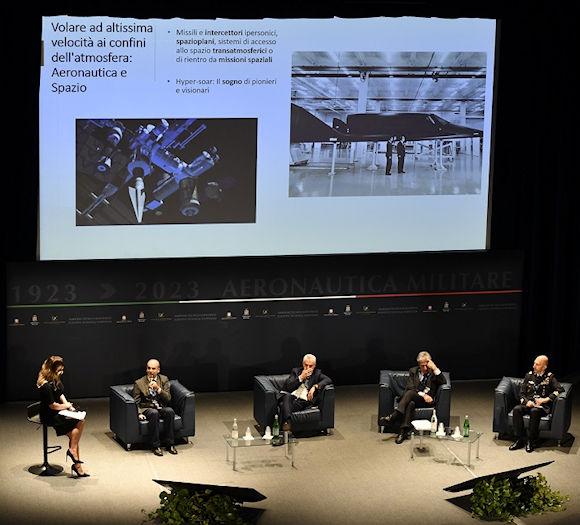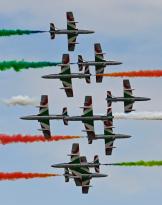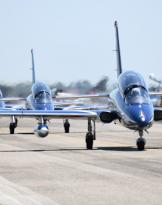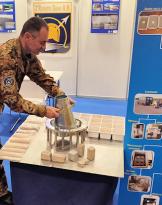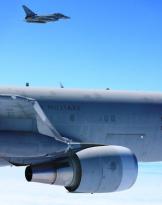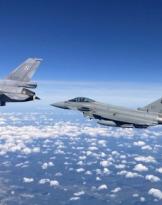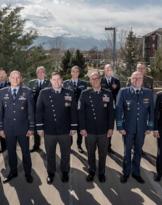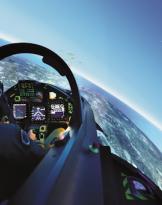The two days of work of the technical-scientific symposium organized by the Air Force as part of the initiatives for the Centenary of the Armed Forces ended this afternoon to delve deeper into the theme of the development of a national hypersonic capability, a very current and of great strategic importance in a future perspective.
A process of discussion, study, comparison and analysis that began over six months ago, which involved around 80 technicians, scientists and civil and military experts and which brought together at the Aeronautical Academy of Pozzuoli, on Thursday 9 and Friday 10 November, the most important excellences and skills in the sector coming from the world of Defense and the Italian aerospace sector, as well as teachers and students from the most prestigious Italian and foreign universities.
The results of this complex study and research project have been summarized in five thematic panels, moderated by Rai journalists Manuela Moreno and Andrea Bettini, in which military, academic, scientific and industrial experts took turns on stage and provided an overview of the work conducted by various technical tables on the subjects deemed to be of greatest interest on the topic of hypersonic: from aerodynamics to communications, from thrusters to advanced materials, from spaceports to space law, up to aspects related to sustainability and human physiology in space.
“This symposium, and the strategic document that brings together all the work carried out in recent months which will soon be completed and made available to the scientific community and military and political decision makers, we believe can trace a path, constitute a starting point in the future debate on development of this capacity, making an important contribution in identifying the necessary transformations on the industrial, scientific, regulatory and infrastructural fronts to keep up with the other players who are already working in this sector", declared the Chief of Staff of the Air Force, Air Squadron General Luca Goretti, who opened and closed the works during the two days of the symposium. “Current scenarios demonstrate the relevance of this topic, for the confluence of challenges, threats and opportunities it brings with it, but above all for the far-reaching implications for aerospace engineering, national defense and scientific exploration. We are entering an era where we will be increasingly dependent on speed, on the ability of systems to adapt and react, factors which in the collective imagination have always been closely linked to air and space forces. To be relevant as a country system, it is essential to understand how to use these technologies for defense and security, but also to fully grasp their potential even in a dual perspective. We leave these two days with the awareness that there is much to do but that as Italy we have the tools to compete and the skills to guide this process at an international level. We need resources and a stable, long-term vision. To be successful, and I say this in this forum referring in particular to the young people attending the Air Force Academy who will be the backbone of the Armed Force of tomorrow, but also to all the young researchers at Italian universities, we must invest and give trust to these young people , believe in their visionary skills. We must be good at understanding how to seize the opportunities that the world we live in offers us, in every sector".
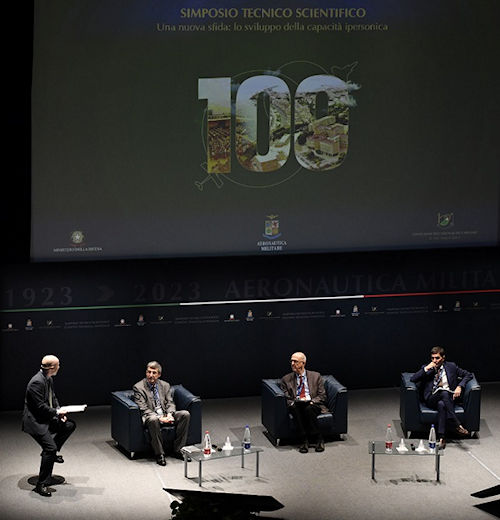 Among the most appreciated interventions were those of Eng. Tommaso Ghidini, head of the mechanical engineering department of the European Space Agency, who underlined how the topic of space and space flight is evolving. “We are opening a new frontier in space flight”, declared Eng. Ghidini. “To fly in space we need a series of technologies, hypersonic is certainly one of them. First of all we must ask ourselves what technologies we need to make a flight of this type. We are talking about propulsion, materials, structures, therefore flying at very high temperatures and flying precisely and therefore also navigation. We will then find all these technologies in environments much closer to us such as flights for passenger transport but also flights that could even take us out of the atmosphere to fly much faster and bring the world closer. I firmly believe that this Symposium is crucial for opening a debate on certain themes and that it can truly be the starting point towards new initiatives, workshops to be developed at a national and European level to continue, as one big family, on this path made up of synergy and cooperation”.
Among the most appreciated interventions were those of Eng. Tommaso Ghidini, head of the mechanical engineering department of the European Space Agency, who underlined how the topic of space and space flight is evolving. “We are opening a new frontier in space flight”, declared Eng. Ghidini. “To fly in space we need a series of technologies, hypersonic is certainly one of them. First of all we must ask ourselves what technologies we need to make a flight of this type. We are talking about propulsion, materials, structures, therefore flying at very high temperatures and flying precisely and therefore also navigation. We will then find all these technologies in environments much closer to us such as flights for passenger transport but also flights that could even take us out of the atmosphere to fly much faster and bring the world closer. I firmly believe that this Symposium is crucial for opening a debate on certain themes and that it can truly be the starting point towards new initiatives, workshops to be developed at a national and European level to continue, as one big family, on this path made up of synergy and cooperation”.
“The Italian Defense wants to be part of this technological leap, indeed the ambition is to contribute to directing it to develop effective defense systems, also from a deterrence perspective”, said Air Brigadier General Davide Cipelletti, head of the General Space Office of the Defense General Staff in his speech. “We are faced with a constant compression of that threshold that divides aerospace from real space and this is a challenge that must be faced in a synergistic way. In Italy we have great academic, scientific and industrial capabilities with which the Defense wants to collaborate to develop new technologies and strengthen mutual knowledge and skills. The Italian Defense already has good operational capabilities, including what in technical jargon is called Space Situation Awareness, or the ability to observe from the ground what is happening in space. We do this thanks to a network of radar sensors and optical sensors from the Defense and the Air Force, and also in competition with other sensors from the Italian Space Agency and the National Institute of Astrophysics; an inter-agency competition that allows us to observe objects flying over the earth in space, calculate their trajectories and verify whether they can represent a problem for the satellite systems of interest".
There was a large presence of representatives of the national industry, both among the guests and in the panels that characterized the program of the two days of the Symposium. A point of view and a fundamental contribution in this context of research and international cooperation which was underlined by the words of Eng. Lorenzo Mariani, Co-general director of Leonardo and president of MBDA Italia: “It is clear that there is an acceleration linked to economic and geopolitical aspects, a quantum leap in technological progress which represents a challenge in which industry certainly plays a very important role. We must systematize all the country's best skills and knowledge to be credible at an international level and seize this epochal opportunity. These are such innovative topics that cohesion, the simultaneous presence of the armed forces, industry and universities are essential factors and I find it particularly significant that it has been done in this place, where every day a piece of the future of the Village".
Also speaking from the United States were Colonel Luca Parmitano, test pilot of the Air Force and astronaut of the European Space Agency (ESA), and Nicola Pecile, formerly test pilot of the Air Force and currently test pilot in the United States of suborbital vehicles, who shared their experiences in their specific fields, both underlining how their training at the Air Force Academy was the essential starting point during their professional career.
Over the two days, at the end of the various panels, some second lieutenants attending the Air Force Academy presented the results of their degree theses on topics closely related to the topics of the Symposium, demonstrating the particular skills that the national university system, to which the Force Armata contributes with university training courses integrated into the processes of its training institutes. “The future is in space, the future is yours!” with these words the Chief of Staff of the Air Force addressed the young attendees who followed the work of the Technical-Scientific Symposium, inviting them to put all their passion at the service of our country.
As part of the organizational activities of the Technical-Scientific Symposium of Pozzuoli (NA), we would like to thank, in particular, the following economic operators for having contributed to the realization of the event: Leonardo SpA, Avio Aero Srl, Intesa Sanpaolo SpA and L3Harris Technologies Inc .


